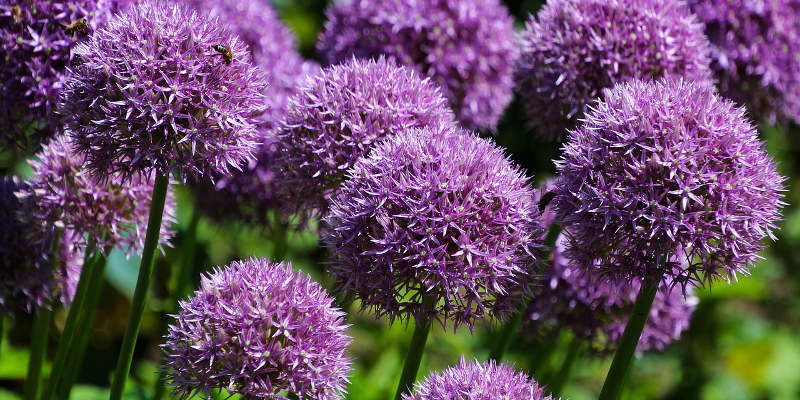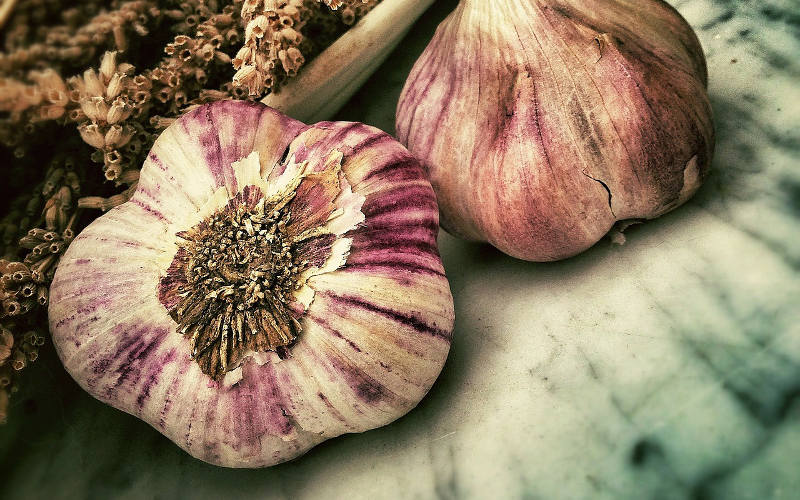Theres nothing like the smell of cooking garlic or steaming garlic bread to make most of us start salivating. In winter we often have a desire to nourish and nurture ourselves with hearty, warming meals that ward off colds and flus. Adding more fresh garlic to our diets is the perfect way to give our bodies valuable phytonutrients and vitamins to keep away sickness and add mouth watering wintry flavour to our meals.
A Clove Of History
Garlic is a part of the allium family and is related to onion, leek and spring onions. With garlics strong flavour and aroma it is not surprising that it has developed such a strong following and has a long and colourful history – believed to ward off vampires and witches and help fight the bubonic plague. Egyptian slaves building the pyramids were said to have eaten garlic to keep up their strength for the impossible task.
A Powerful Healer
Garlics healing properties, however are undisputed, with Pasteur documenting its antibacterial properties first in 1858. The high sulphur content of garlic makes it valuable in the treatment of bacterial, fungal and viral infections. It is also known to boost the immune system. Garlic is recommended as a regular addition to any diet designed to improve heart and circulation health and repair damaged blood vessels. It is also helpful in lowering harmful LDL cholesterol.

aliums – garlic flowers
Antioxidants For Longevity
Those potent little bulbs also contain antioxidants. Oxidants or free radicals are formed inside the body, damage cells and contribute to the ageing process. In the external environment oxidants are formed from the effects of pollution, pesticides and the sun. Ensuring garlic is a regular part of a diet full of vegetables and fruits can help combat these oxidising effects. Preliminary studies have also found garlic to be beneficial in combating cancers, including stomach and colon cancer.
Fry, Slice or Crush?
Garlic can be cooked, but eating garlic fresh is best in order to benefit from its multitude of health giving properties. The longer garlic is cooked, the more its health giving properties are reduced. If cooking garlic, let it sit for 10 minutes after crushing or slicing it before heating.
Cooking With Garlic
For a sore throat or a cold, try eating a raw crushed garlic clove or adding a crushed clove to warm milk. Garlic can be added raw to dips and dressings. The traditional French mayonnaise, aioli, consists of crushed garlic, eggs, olive oil and salt and is a tasty addition to vegetables and potatoes. Garlic is delicious roasted or spread on toasted bread with freshly sliced tomato and basil. In fact, for vegetarians or those eating a predominantly plant based diet, garlic is an essential ingredient that provides that yummy savoury zing or umami flavour that really makes a meal delicious.
Garlic Breath
The downside for some is garlics strong aroma and concern about garlic breath. However the sulphide properties that give garlic its strong smell also contain its most beneficial properties. This is why garlic has been known as the stinking rose and also why odourless garlic supplements are not recommended. To neutralise the odour of garlic, try eating an apple or lemon juice or chewing cardamon or parsley. Garlics strong aroma, however hasnt prevented the famous bulb from being cultivated and eaten continually for over 3000 years. If its any consolation look at the French, who have managed to combine eating garlic and snails whilst developing a reputation as the lovers of the world.
Organic garlic grown without pesticides is the most desirable way to maximise health and flavour. Garlic can be grown from cloves, planted in spring and harvested about six months later after flowering.






Leave a reply